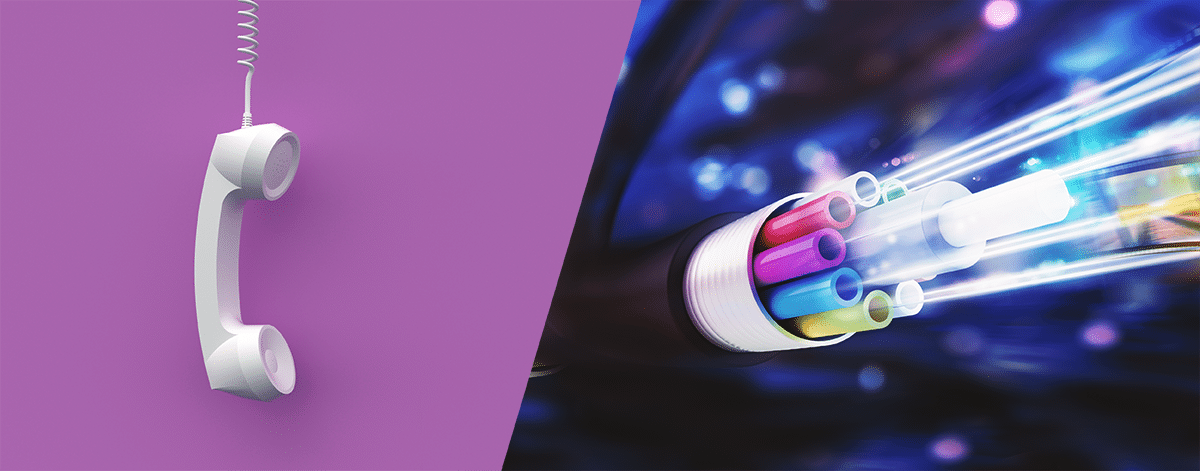Having a good internet connection is essential today, whether you’re running a small business, attending virtual classes or working remotely. Even the way we consume entertainment, from watching movies to gaming, requires a good connection and fast speeds.
People within Hub66’s service area often ask us, what’s the best service for delivering speed? If you’re considering DSL, cable or fiber, here’s what you need to know.
What is Fiber Internet Service?
Fiber-optic internet, sometimes known as fiber internet or just fiber, is a broadband connection that uses a fiber-optic cable. These cables are made up of optical fibers, which are slightly thicker than a human hair. Bundled together, they carry pulses of LED light that transmit data up to 70% of the speed of light. Fiber cables are less sensitive to harsh weather conditions and electromagnetic interference than conventional cables, which makes fiber internet service very reliable.
Another advantage is that it provides symmetrical uploads and downloads, meaning upload speeds are just as fast as download rates. Because of its speed, fiber internet is especially useful for Zoom calls, sharing large files, and streaming video, all of which require consistent upload speeds. Fiber can achieve rates of up to 100 Mbps with little lag time.
Fiber is the latest technology in providing internet; one drawback is that it may not be available everywhere.
What is DSL?
DSL is an internet connection that uses the copper wires in your current phone line to deliver internet service to your home or business. Because it uses frequencies different from a landline phone, customers can talk on their landline phone and internet simultaneously. People also can choose to get DSL service without even having a landline.
It’s widely accessible–phone service is available nearly everywhere–but it does have some challenges when it comes to speed and reliability. The farther you are from the provider, the slower the speed of your connection.
What Is Cable Internet?
Cable internet service–like the name suggests–uses the same coaxial cable network as your cable television service to also provide internet. The data enters your home through the coaxial cable and to a modem, which then uses an Ethernet cable to connect to a computer or router for WIFI. Because cable internet uses the same lines and network as cable TV, it is widely available.
Cable speeds range from 1 Mbps to 1 gigabyte per second (Gbps), although upload speeds tend to be slower, only up to 50 Mbps, which can pose some limitations to people and businesses that upload large files regularly.
DSL vs. Cable vs. Fiber: Which is better?
The biggest difference between DSL, cable, and fiber are the speeds, and it’s a big difference. DSL upload speeds can range from 1 to 10 Megabits per second (Mbps), while download speeds range from 5 to 35 Mbps. Cable has upload speeds of 30-35 Mbps, with download speeds around 1 Gigabyte.
Fiber, on the other hand, can support rates of up to 2 Gigabytes both up and downloading. This is a big difference and makes it the perfect technology for gaming, watching movies with the family, or conducting day-to-day business at fast speeds.
Although many rural areas do not have access to fiber today, Hub66 has been working with local communities to bridge the internet divide through the expansion of fiber service to traditionally underserved areas. We offer service to thousands of homes, businesses, and municipal buildings throughout New Hampshire, Vermont, and Massachusetts. Our most recent project was in Bristol, NH, a public-private partnership to deliver broadband internet access to the town.
Want to know if fiber cable is available in your area? Go to hub66.com/home-fiber-internet.

